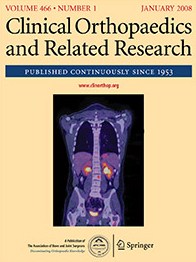
Arthroplasty
Periarticular injection & intrathecal morphine provide similar pain relief after TKA
Clin Orthop Relat Res. 2013 Jun;471(6):1992-9. doi: 10.1007/s11999-013-2826-9. Epub 2013 Feb 959 patients undergoing total knee arthroplasty (TKA) were randomized to receive either spinal anesthesia with intrathecal morphine sulfate or periarticular multimodal drug injections. The purpose of the study was to compare which method provided better pain alleviation and fewer adverse events. Following 3 months of assessment, there no significant differences between the two techniques concerning pain and function. However, the incidences of nausea, vomiting, and pruritus were significantly higher for patients who received the intrathecal morphine sulfate.
Unlock the full article
Get unlimited access to OrthoEvidence with a free trial
Start TrialCritical appraisals of the latest, high-impact randomized controlled trials and systematic reviews in orthopaedics
Access to OrthoEvidence podcast content, including collaborations with the Journal of Bone and Joint Surgery, interviews with internationally recognized surgeons, and roundtable discussions on orthopaedic news and topics
Subscription to The Pulse, a twice-weekly evidence-based newsletter designed to help you make better clinical decisions
Exclusive access to original content articles, including in-house systematic reviews, and articles on health research methods and hot orthopaedic topics
Or continue reading this full article
Register Now

Subscribe to "The Pulse"
Evidence-Based Orthopaedics direct to your inbox.




































